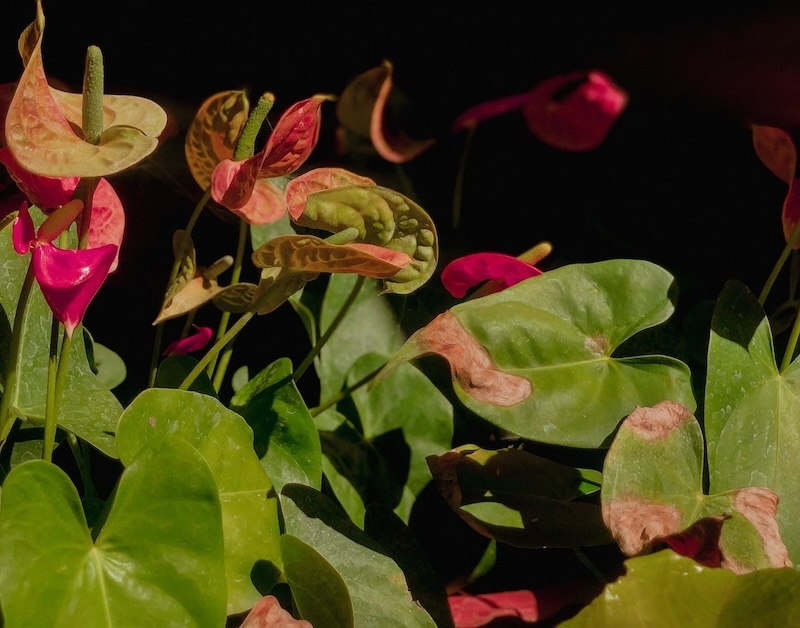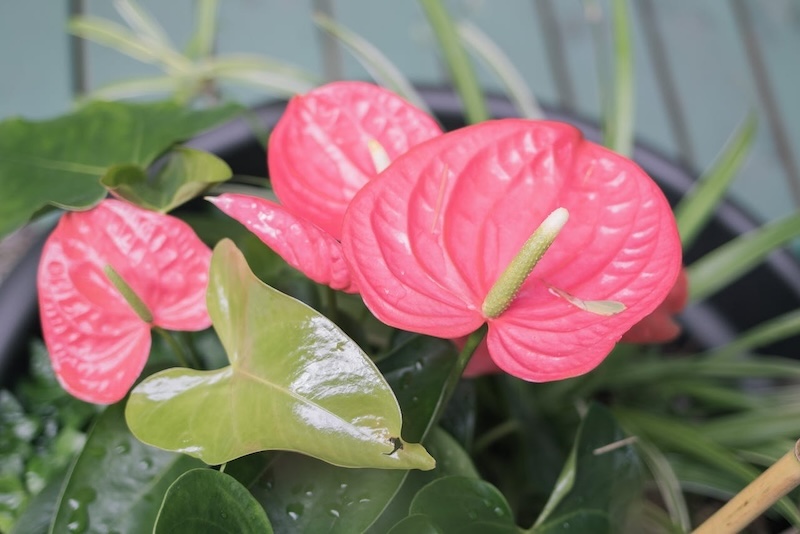Anthurium Is Dying
Vibrantly red and glossy Anthurium plants are native to tropical climates. Anthurium plants are easy to care for and will thrive if given the proper growing conditions. The optimal conditions mimic their native tropical habitat with warm temperatures, higher humidity, and bright indirect light. Anthurium prefers regular waterings but does not want to be overly moist with roots sitting in water. It is important not to over- or under-water Anthurium but rather find the right balance.
If your Anthurium is not given adequate conditions to thrive, it will begin to show signs of distress. It is important to be aware of these signs so that you can troubleshoot and address the issue. The most common signal of an unhappy plant is a change in foliage health. Drooping, withered, or limp foliage can point towards watering issues. Changes in coloration such as yellowing and browning can point towards disease. Lastly, holes in the foliage or strange residues and marks indicate pest problems. Each problem has a different set of remediation methods to improve the health of your Anthurium.

Anthurium Leaves Turning Yellow
Yellowing leaves on an Anthurium plant could be caused by a few different factors. The most common reason for yellowing leaves is overwatering. Overwatering will create soggy, drooping leaves that will yellow and fall off. If the soil is overly moist and your Anthurium’s leaves are yellowing, allow the plant to dry out completely before watering again. Reduce the frequency that you water your Anthurium. Another reason your Anthurium leaves may be turning yellow is due to lack of nutrition. If the leaves of your Anthurium are pale yellow and you have not provided fertilizer in months, you can apply a liquid or granular fertilizer to amend the soil nutrition. Yellowing foliage can also point toward fungal diseases or pests.
Anthurium Pests
Anthurium plants are not typically prone to many pest issues. They are susceptible to pests like most houseplants but are not a favorite target of pests. A pest infestation can harm your Anthurium, so it is important to regularly monitor the health and conditions of all of your houseplants. Anthurium is susceptible to common pests such as aphids, fungus gnats, mealybugs, spider mites, scale and thrips. Signs of a pest infestation include sticky residues on foliage, yellowing foliage, holes in foliage, fine spider webbing, and visible insects. If you notice pests on your Anthurium, quarantine the plant and begin to clean the foliage top and underside with an insecticidal soap. If possible, change out the soil and discard the old soil. Continue to regularly clean and monitor your Anthurium as you rid the plant of the pest.

Anthurium Diseases
Anthurium plants are prone to bacterial and fungal diseases, with the most common being Phytophthora, root rot caused by Rhizoctonia, bacterial blight, and Pythium. A common symptom of these diseases includes brown and black spots on the foliage especially on the edges of the leaves. Another sign of disease is mushy or blackening roots in waterlogged soil. If you notice these symptoms, allow the plant to dry out thoroughly before watering and remove damaged foliage. Repot the soil with fresh potting mix and discard as much old soil as possible.

Anthurium Not Blooming
Technically, the red glossy and long-lasting flower that Anthuriums are known for is not a flower but a ‘spathe’. The flower is the small central part that is found on the spadix. Whatever the technical name, they are beautiful and long lasting. Anthuriums can bloom throughout the year, and the blooms will last several weeks to months at a time if given the correct growing conditions. If your Anthurium is not blooming, it may be because it just finished a blooming cycle or it needs different growing conditions. Make sure your plant is receiving the correct levels of water, sunlight and humidity, and check for any signs of pests.
 |
Author Katie Endicott - Published 11-28-2023 |
